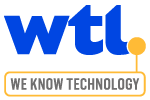Artificial Intelligence has come to dominate the corporate agenda as businesses of all sizes try to determine where and how best to use the technology. At the same time, CIOs are under pressure to ensure the tech stack is AI-ready.
Oracle has identified five key components of an AI-ready tech stack to help businesses build, deploy, and manage AI-driven applications efficiently. Does your organisation have them all in place?
1. Data Storage and Management
A robust data infrastructure is the critical foundation of AI operations. This includes data lakes, warehouses, and governance systems that store and organise vast amounts of data, allowing it to be quickly accessed and processed for AI models.
Given the elastic nature of storage requirements, it is highly likely that your business will need well-engineered hybrid cloud infrastructure to meet changing requirements. Additional flexibility may be realised through a multi-cloud approach that allows you to cherry pick the most appropriate services at the most cost-effective prices.
2. Compute Resources
AI workloads, especially those involving machine learning (ML) and deep learning, are resource-intensive. High-performance GPUs, TPUs, and scalable cloud infrastructure are necessary to train and deploy AI models. AI recognition of these resource demands, Oracle’s infrastructure includes powerful computing resources that ensure optimal performance and scalability for AI workloads.
Again, flexibility will be crucial as AI requirements extend from edge to cloud and everywhere in between.
3. AI and ML Frameworks
These frameworks provide the tools necessary to develop, train, and fine-tune AI models. Prebuilt models like large language models (LLMs) simplify the process of integrating AI into applications and may already be available through your cloud providers.
Oracle embeds AI within its platforms and enables developers to access prebuilt models for tasks like natural language processing and text analysis. You’re not only AI-ready, but have everything needed to accelerate development, deployment and adoption.
4. MLOps Platforms
For continuous delivery and scalability of AI, MLOps automates the development, deployment, and monitoring of machine learning models. Given the natural susceptibility of ML models to poisoning, drift and irrelevance, have MLOps in place early will help to better protect AI operations.
MLOps will ensure that models remain relevant and up-to-date over time, reducing manual work and operational complexity. Which means a greater return on your AI investment in the medium to long term.
5. AI Integration and APIs
Seamless integration of AI into existing workflows is essential. Using APIs and integration tools to embed AI into business applications will allow your company to leverage AI without overhauling existing systems. Which makes it easier to adopt and scale AI solutions as demands change.
Putting it together
The combination of strong infrastructure with intelligent tools and integration ensures that enterprises can leverage AI to optimise operations and drive innovation. As such, the elements of an AI-ready tech stack are relatively obvious – but putting them together effectively, not so much. For more help and advice about how to prepare your business for its AI-enabled future, please give the WTL team a call today.
